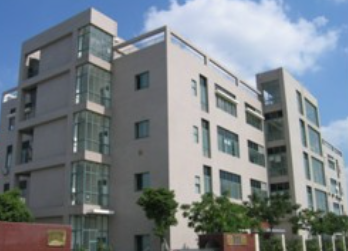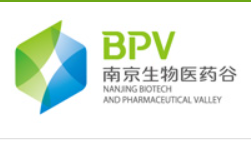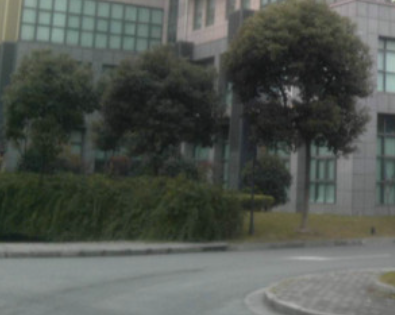一、酯的碱水解
水解反应是酯化反应的逆反应,酯化反应要在酸性条件下进行的,因此多数情况下酯的水解在碱性条件下进行是有利的。一般来说非位阻酯的水解主要通过LiOH-MeOH-H2O 体系于室温下进行反应,正常条件是氢氧化锂的当量为2-5 当量,甲醇与水的比例为5:1~3:1。如果反应仍不能水解,可适当加热直至回流。对于有些位阻大、惰性的酯,需要用更强的反应条件,一般可使用NaOH、KOH 的水溶液或水甲醇的混合溶液进行水解,其中最强烈的条件是用KOH 的水甲醇的混合溶液回流水解,KOH的浓度越大、溶剂甲醇的比例越高,水解条件越强,很少有在这种条件下水解不了的酯。对于该类水解反应的后处理一般先浓缩去处醇类溶剂,然后用有机溶剂提取可能未反应完的非酸类副产物,再酸化,许多酸在此时可以析出沉淀,过滤即可得到,若为油则用有机溶剂提取。有时当一个分子同时存在甲酯和叔丁酯时,用以上条件很难较好的选择性的水解甲酯,有时需要控制碱的当量数和反应温度。
1.1、LiOH-MeOH-H2O 水解体系的标准操作
To a solution of ester (10 mmol) in MeOH-H2O (30 mL, MeOH:H2O=3:1~5:1, 甲醇浓度越高,水解能力越强) at 0°C was slowly added LiOH.H2O (800 mg ~ 2 g, 20-50 mmol). The reaction mixture was allowed to warm to room temperature overnight (若水解不完全就加热至反应完全). Methanol was removed in vacuo and the residual aqueous solution was partitioned with Et2O or AcOEt (~20 mL), then the organic phase was extracted with H2O (5-10 mL, two times). The combined aqueous extracts was acidified to pH 2 with 1N HCl. The aqueous phase was extracted with CHCl3 (three times) (注意若有固体析出则过滤得到相应的酸). The combined organic extract was dried over MgSO4 and concentrated to afford thedesired acid (normal yield >95%).
1.2、 LiOH-MeOH-H2O 体系的选择性水解甲酯

To a solution of compound 1 (14.15 g, 48.1mmol) in MeOH (250 ml) at 0°C was slowly added aqueous LiOH (1M, 48 ml, 48mmol) over 15 min. The reaction mixture was allowed to warm to room temperature overnight with stirring.The organic solvent was removed in vacuo and the residual aqueous solution was partitioned with Et2O, then the organic phase was extracted with H2O (two times). The combined aqueous extract was acidified to pH 2 with 1N HCl. The aqueous phase was extracted with CHCl3 (three times). The combined organic extract was dried over MgSO4 and concentrated to afford the desired acid (11.4 g, 85%).
Reference: Publ.: US2004/6065 A1 (2004/01/08); Appl.: US2003-465426 (2003/06/19)
1.3 、KOH-H2O 体系的水解

A mixture of ethyl 3-methylcoumarilate (70 g, 0.34mol) and 10% aqueous potassium hydroxide solution (500 mL) was refluxed for 1 hour. The clear yellowish solution was acidified while hot with a slight excess of concentrated hydrochloric acid to precipitate 3-methylcoumarilic acid. The suspension was cooled to room temperature, and the colorless solid was filtered with suction. The filter cake was resuspended in 500 mL of cold water, stirred vigorously for several minutes, and filtered again with suction. The colorless powder The filter cake was dried in a desiccator under reduced pressure to give a colorless powder (54~57 g, 90~95%) which melts at 192~193°C.
Reference: Organic Syntheses: Coll. Vol. 4, 590
二、酯的酸水解
某些情况下对于一些特定结构的酯需要在酸性条件下进行水解,例如叔丁酯和一些对碱不稳定的酯。有些氨基酸酯在1 N 盐酸回流条件下水解(一般回流1~2 小时即可),蒸干溶剂后可直接以盐的形式进行下面的反应,而无需进一步提纯,此时也可以考虑用酸进行水解。叔丁酯一般比Boc 难脱,一般要用50-100%TFA 或4N HCl/Dioxane (注意:在用HCl/dioxane 来脱除叔丁酯时,千万不能在溶剂处理时中引入甲醇,乙醇或其他小位阻的醇,否则叔丁酯会转变为相应的酯。
2.1 、叔丁酸酯的酸水解

1-(4-Methoxycarbonyl-2-methylbutanoyl)-L-proline t-butyl ester (3.4 g, 10.8 mmol) was dissolved in trifluoroacetic acid (25 mL) and the resulting solution was kept at room temperature for one hour. The trifluoroacetic acid was removed in vacuo and the residue was used to the next reaction directly.
Reference: US4154937
2.2 、对碱不稳定的酯的酸水解

A solution of ethyl α-chlorophenylacetate (119 g, 0.6 mol) in glacial acetic acid (238 mL) and concentrated hydrochloric acid (119 mL) was heated under reflux in a hood for 1.5 hours. At the end of the heating period the solution was concentrated by heating in an oil bath at 100°C at reduced pressure (15~20 mmHg) until no further material was distilled. The residue was allowed to cool to room temperature and poured slowly with stirring into 1 L of ice-cold saturated sodium bicarbonate solution. Solid sodium bicarbonate was added in small portions until the solution became neutral to universal indicator paper. The solution was then extracted with two 200 mL portions of ether. The aqueous phase was acidified cautiously with ice-cold 12N sulfuric acid until the mixture was acid to Congo red paper. The oily suspension was extracted with two 200 mL portions of ether. The ether extracts were washed with two 100mL portions of water and dried over 45 g of anhydrous sodium sulfate. The dried ether extract was concentrated on a steam bath until ether was no longer distilled. To the residue there was added 500 mL of warm (50~60°C) concentrated hydrochloric acid (in a hood) and the suspension was allowed to cool with occasional swirling. Crystallization was completed by chilling in ice and the product was collected on a sintered-glass funnel. After the product was dried as much as possible on the funnel it was dried to constant weight in a vacuum desiccator over solid potassium hydroxide to give the dry acid (82~84 g, 80~82%) which melts at 77.5~79.5°C.
Reference: Organic Syntheses. Coll. Vol. 4, 169
本文内容来源于网络,版权归原作者所有。







